Intercity Elevators
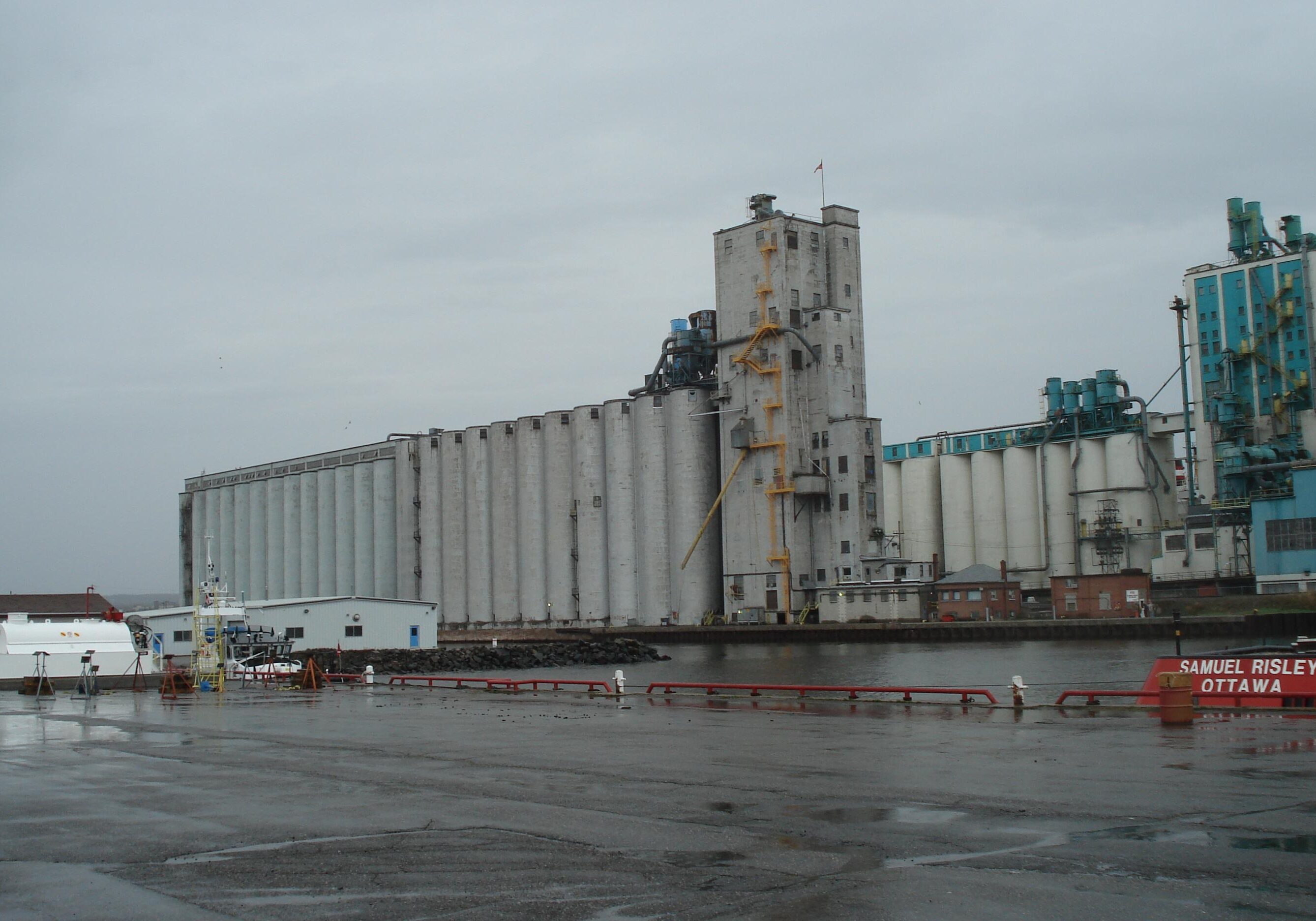
Parrish & Heimbecker
Construction began on the Superior Terminal in 1922, supervised by Barnett-McQueen. Superior Elevator Company was owned by Parrish & Heimbecker, but the terminal wasn’t known as P&H Elevator until 1965. The original elevator only had 6 storage bins for a total capacity of 300,000 bushels. The elevator was later expanded in 1927 and 1967 to a capacity of 1,700,000 bushels. The bins continued to be configured in pairs, making P&H terminal one of the thinnest elevators on the waterfront. Due to the elevator’s size, operations were slow but steady. In 2013, Parrish & Heimbecker joined with Cargill to operate the new Superior Terminal on the Mission River in Fort William. At the same time, grain operations ceased at the Intercity terminal and the elevator was sold to Global Recycling. The elevator remains standing.
Overview
Original Name:
Date of opening:
Designer:
Builder:
Initial Owner:
Current Owner:
Superior Elevator
1922
--
Barnett-McQueen
Parrish & Heimbecker
Global Recycling
Capacity:
Piles:
Initial Railway Service:
Geographic Service:
Operating:
1,700,000 bushels or 46,270 tonnes
--
48.410687, -89.223243
No, decommissioned
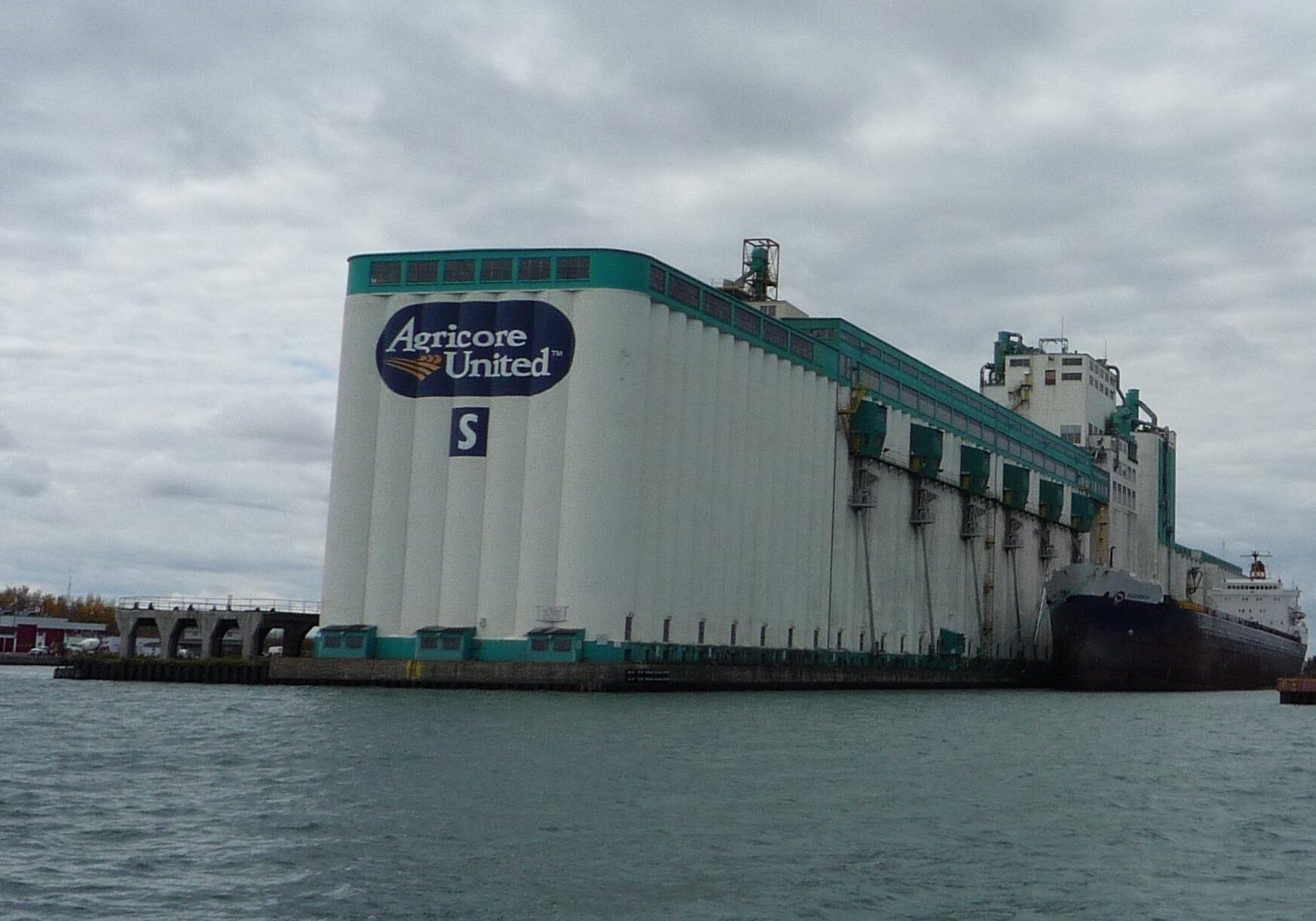
Agricore S
Davidson & Smith built their first terminal in the Intercity area after having leased several terminals across the waterfront. Constructed by Barnett-McQueen between 1913 and 1914, the 750,000-bushel Davidson & Smith terminal was primarily a hospital elevator. With its specialized equipment, the elevator had a drying capacity of 2,500 bushels per hour, and a cleaning capacity of 14,000 bushels per hour. The terminal had 1,400 feet of water access through a slip on either side of its lot, giving it a loading capability of 40,000 bushels per hour. On its three receiving tracks, the elevator could unload at a speed of 80 cars every 10 hours. The original workhouse was 167 feet high, and the 70 annex bins were 90 feet high and 21.5 feet in diameter. The elevator’s first expansion increased its capacity to 1,750,000 bushels, and a near-total reconstruction in 1962 brought its capacity up significantly to 6,080,000 bushels.
The Reliance Grain Company and the Northwestern Grain Company intermittently leased the elevator, and it was eventually sold to Manitoba Pool before the 1962 expansion, becoming Manitoba Pool 1. When Manitoba Pool Elevators merged with Alberta Wheat Pool in 1998, the elevator was renamed Agricore S. The elevator is now owned by the Thunder Bay Port Authority and has ceased grain operations, though it remains standing.
Overview
Original Name:
Date of opening:
Designer:
Builder:
Initial Owner:
Current Owner:
Davidson & Smith
1914
Barnett-McQueen
Barnett-McQueen
Davidson & Smith
Thunder Bay Port Authority
Capacity:
Piles:
Initial Railway Service:
Geographic Service:
Operating:
6,080,000 bushels or 165,470 tonnes
--
Canadian Pacific and Canadian Northern
48.411292, -89.222707
No, decommissioned
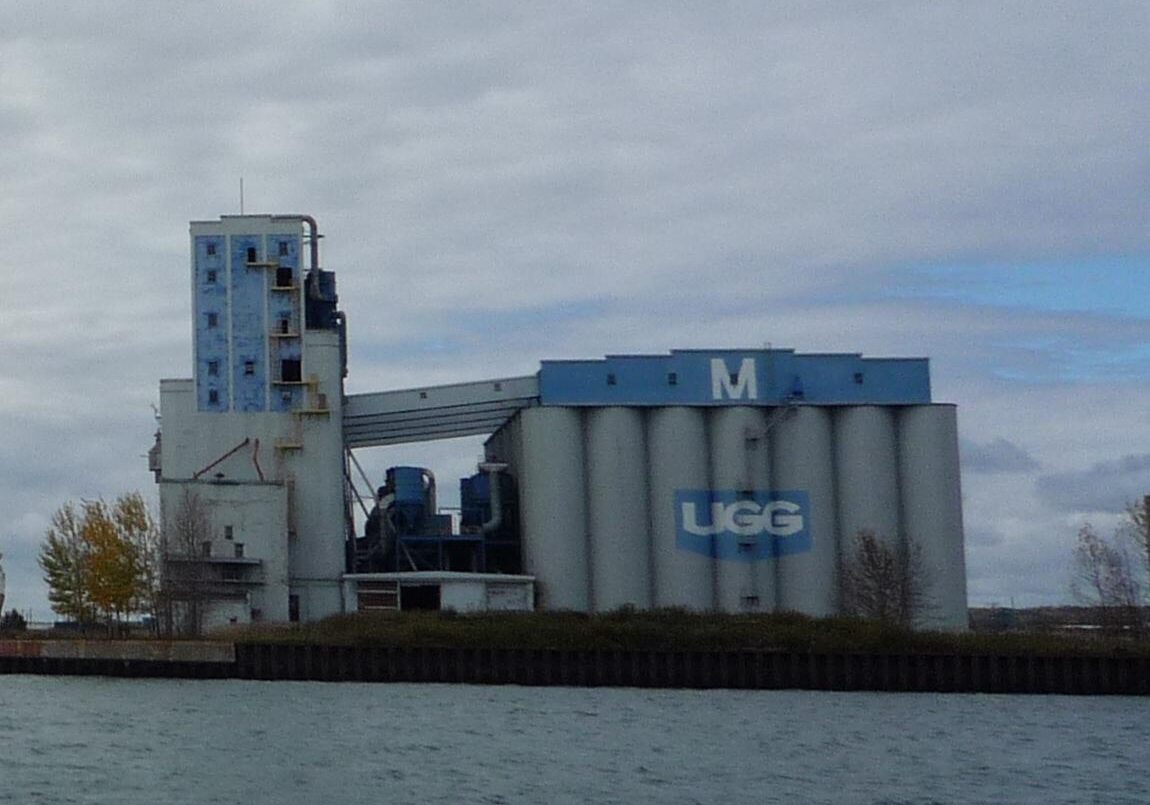
UGG M
This terminal was originally built by the Dominion Government in 1913 to fulfill the mandates of the 1912 Canadian Grain Act. The government was tasked with studying terminal grain operations; since no existing elevators would lease their terminals for the project, the government had to construct their own terminal. The 3,250,000-bushel capacity elevator was built by Barnett-McQueen, and CD Howe was appointed supervisor—his first involvement in terminal construction. The L-shaped design was inspired by the Grand Trunk Pacific and Empire elevators, which both had their track shed in between the annex and workhouse for efficiency. As research was a main priority for the elevator, the 185-foot-high workhouse had more bins than a normal terminal so it could handle smaller lots of niche grain. The workhouse had 75 circular bins, 56 interspace bins, and 36 outerspace bins. The annex, connected to the workhouse by galleries above and below ground, had 70 circular bins—each 90 feet high and with a diameter of 24 feet—and 54 interspace bins. The track shed housed 4 tracks capable of unloading 20 cars simultaneously. For 1913, the terminal had state of the art technology, like 10 hopper scales, 15 cleaners, multiple separators, and special equipment for handling oats and flax.
The government leased the elevator to McCabe Grain Company in the early 1930s, and the elevator became known as McCabe’s. McCabe sold the terminal to UGG in 1967, and the elevator was renamed UGG-McCabe’s or UGG M for short. The elevator was eventually sold to the Thunder Bay Port Authority, and its grain operations have ceased. The elevator remains standing.
Overview
Original Name:
Date of opening:
Designer:
Builder:
Initial Owner:
Current Owner:
Dominion (Gov't) of Canada
16 October 1913
Barnett-McQueen
Barnett-McQueen C.D. Howe (supervisor)
Government of Canada
Thunder Bay Port Authority
Capacity:
Piles:
Initial Railway Service:
Geographic Service:
Operating:
3,250,000 bushels or 88,450 tonnes
--
Canadian Pacific and Canadian Northern
48.412524, -89.222503
No, decommissioned
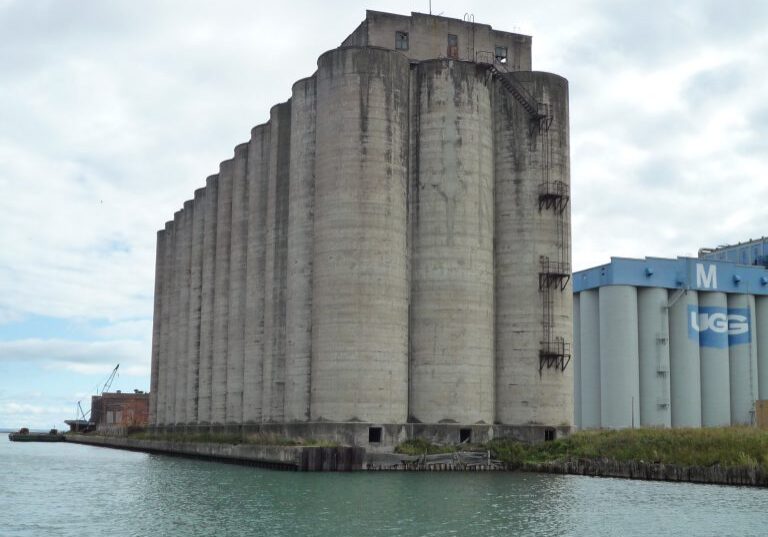
Thunder Bay
Thunder Bay Elevator Company built the first terminal elevator in the Intercity area in 1909. Barnett-McQueen designed and constructed the elevator, which had a wooden workhouse and concrete annex. The workhouse measured 100x150 feet and was 165 feet tall. It was built 100 feet away from the annex, owing to the flammability of the wooden materials, and was connected by an enclosed gallery. The 36 annex bins were arranged 3x12. They measured 90 feet high with 23-foot diameters. As slipform methods of pouring concrete were still unperfected, a ridge was visible every 3 feet along the bin walls where the forms were moved before the concrete was set. The elevator’s total capacity was 1,500,000 bushels. The three receiving tracks could unload 140 cars in 13 hours, and the 6 shipping spouts could load 40,000 bushels per hour. In 1916, the elevator handled the most expensive carload of wheat, which would be worth around $90,000 today.
The Thunder Bay Elevator was eventually decommissioned and sold to the Thunder Bay Port Authority. The terminal had the longest-standing original wooden workhouse in the Lakehead. In 1996, this workhouse was demolished, but the concrete annex remains standing.
Overview
Original Name:
Date of opening:
Designer:
Builder:
Initial Owner:
Current Owner:
Thunder Bay Elevator
1909
Barnett-McQueen
Barnett-McQueen
Thunder Bay Elevator Co.
Thunder Bay Port Authority
Capacity:
Piles:
Initial Railway Service:
Geographic Service:
Operating:
1,500,00 bushels or 40,823 tonnes
--
Canadian Northern
48.413578, -89.222986
No, decommissioned. Only silos remaining.
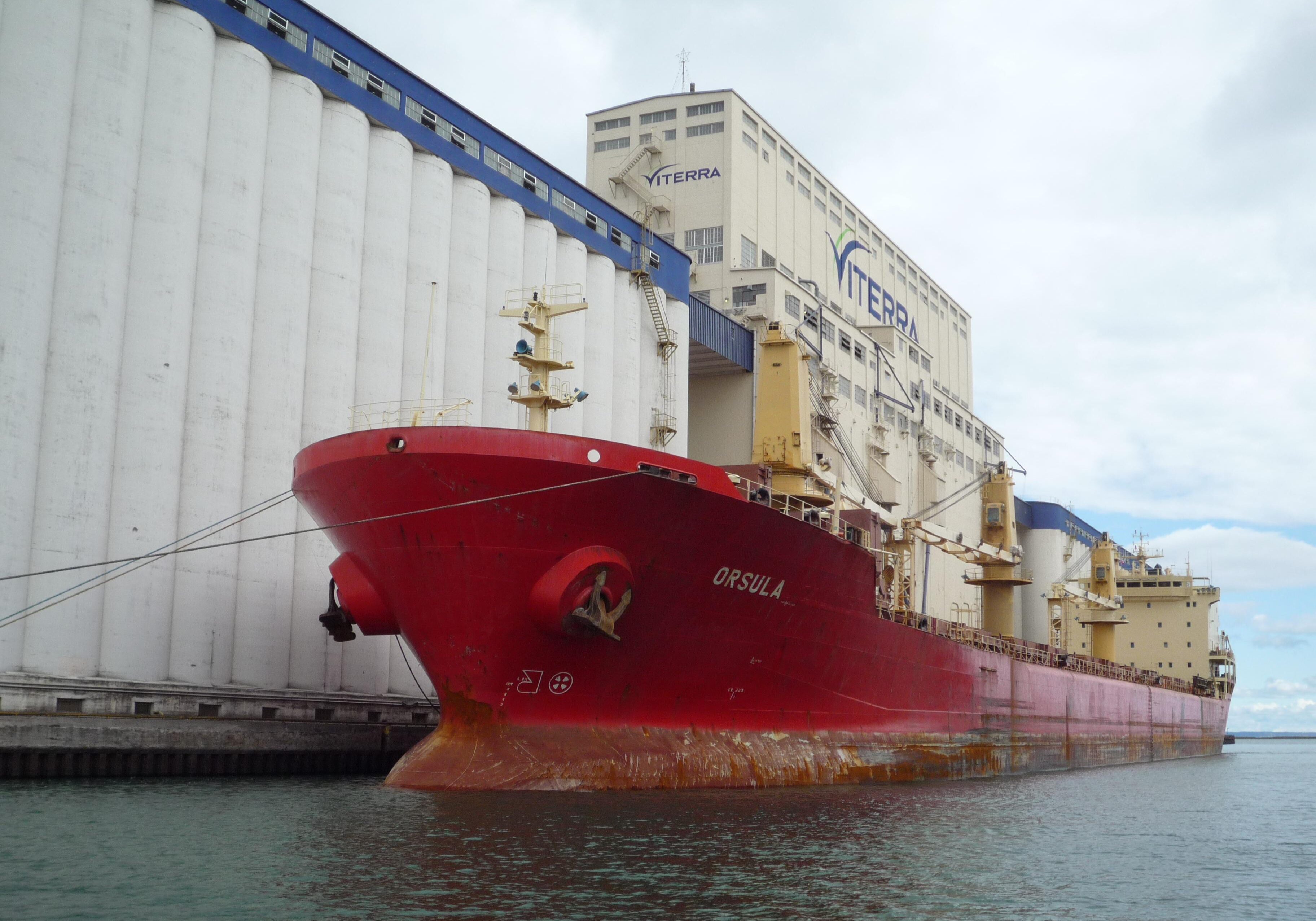
Viterra A
Vittera A, previously known as Saskatchewan Pool #7 and owned by the namesake, is a longstanding elevator that officially opened in October of 1928. Currently under the ownership of Glencore, the elevator was quoted as having a storage capacity of 7,200,000 bushels, making it one of the world's largest single unit elevators at the time. The elevator's design was engineered by the consulting business known as C.D. Howe and Company, who had previously designed at least one elevator each year for the previous twelve years, whereas the actual construction was performed by Barnett-McQueen and took 6 months to complete. At the time of completion, Pool #7 was quoted by Howe as being "1100 feet tall and 100 feet wide", in addition to possessing annexes and workhouses that were 125 feet and 210 feet high respectively.
Today, the elevator still operates as Viterra A, under the ownership of Glencore, at 609 Maureen St. More information can be found by clicking the 'More Information' button.
Overview
Original Name:
Date of opening:
Designer:
Builder:
Initial Owner:
Current Owner:
Saskatchewan Wheat Pool #7
1928
C.D. Howe and Co.
Barnett-McQueen
Saskatchewan Wheat Pool
Glencore
Capacity:
Piles:
Initial Railway Service:
Geographic Service:
Operating:
7,200,000 bushels (as Pool 7)
19,642
Canadian Pacific
48.414380504878636, -89.22140803188086
Yes
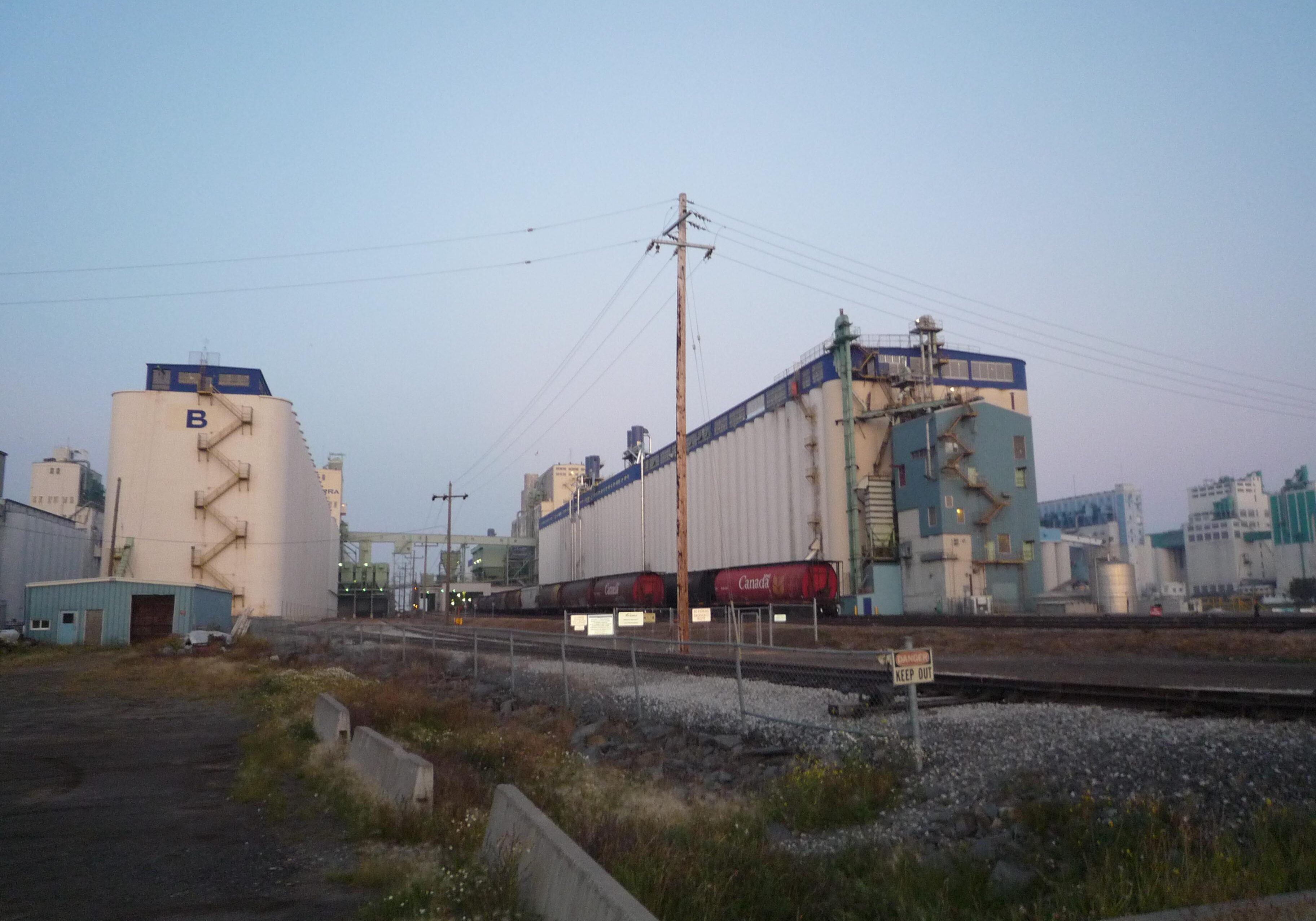
Viterra B
Originally known as the Stewart Elevator and Saskatchewan Wheat Pool #7B, Viterra B was constructed in 1923 as a mirror image of Canada Malting, previously known as Bawlf elevator. As such, many of Stewart elevator's storage statistics were similar to Bawlfs, such as a storage house that held 250,000 bushels, a working house measuring 94x63 feet, 23 storage tanks, and the ability to maintain 125 receiving cards per day. During its operation, Stewart received several structural additions. These additions were as follows:
1923 - Creation of first annex, directed by C.D. Howe. Capacity of 1,000,000 bushels.
1927 - Addition of second annex, directed by C.D. Howe. Capacity of 1,000,000 bushels.
1960 - Addition of third annex, diected by C.D. Howe. Capacity of 1,200,000 bushels.
1966 - Addition of fourth annex, directed by C.D. Howe. Capacity of 1,000,000 bushels.
1966 - Addition of fifth annex, directed by C.D. Howe. Capacity of 1,000,000 bushels.
Overview
Original Name:
Date of opening:
Designer:
Builder:
Initial Owner:
Current Owner:
Stewart
1923
C.D. Howe
Cater, Halls, and Aldinger
Stewart
Glencore PLC
Capacity:
Piles:
Initial Railway Service:
Geographic Service:
Operating:
150,000 tonnes
--
Canadian Pacific
48° 24' 52.1892'' - 89° 13' 41.1816''
Yes
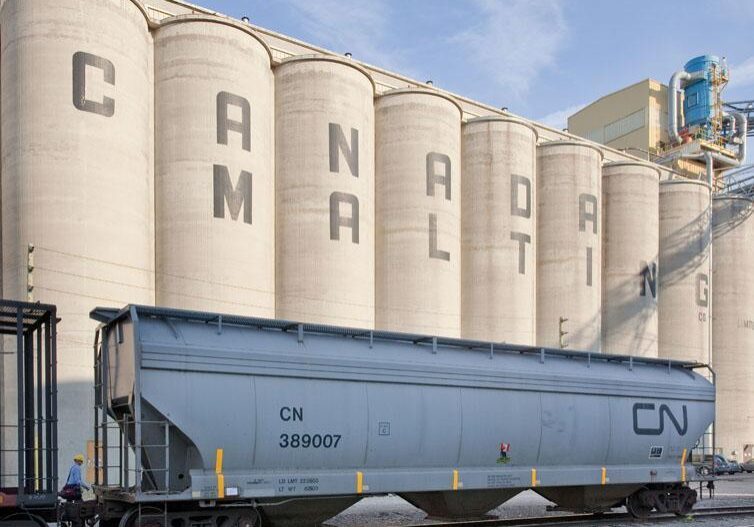
Canada Malting
Constructed in 1923 and designed to be identical to the the Stewart Elevator, the Bawlf elevator featured a working house of 94x63 feet, 23 round storage tanks, 17 outerspace bins, and 15 interspace bins for with a capacity of 250,000 bushels for a total capacity of 1,250,000 bushels of grain. Thanks to six receiving hoppers and three train tracks, Bawlf was able to maintain 125 receiving cars per day. Equipped with receiving scales that could handle 2000 bushels per hour, Bawlf could also handle an additional 12,000 bushels an hour thanks to two 30-inch belts and two rows of 7.5x7.5-inch buckets. The elevator was also equipped with several grain separators and was powered via a station located in Nipigon. Bawlf saw several additions over the years, but the biggest change came in 1957 when Canada Malting added a $4,000,000 expansion that would result in ownership of the elevator.
Today, Canada Malting, located at 579 Maureen Street, is able to support 125,000 tonnes of barley, which it ships all across eastern North America. Outside of barley receival, Canada Malting's facility also engages in steeping, germination, kilning, and shipping. A deeper look
into their processes can be found by clicking the 'more information' button.
Overview
Original Name:
Date of opening:
Designer:
Builder:
Initial Owner:
Current Owner:
Bawlf
1923
C.D. Howe
Cater, Halls, and Aldinger
Bawlf
Canada Malting Co. Limitec
Capacity:
Piles:
Initial Railway Service:
Geographic Service:
Operating:
125,000 tonnes
--
Canadian Pacific
48° 24' 52.1892' - 89° 13' 41.1816''
Yes

Manitoba Pool 3
Originally called the Reliance Terminal, Pool 3 was constructed in 1924 by Barnett-McQueen, although it was designed by C.D. Howe. The reinforced concrete elevator had an original capacity of 1,500,000 bushels. The workhouse was 78x110 feet and 152 feet high. It housed 35 circular bins, 27 interspace bins, and 19 outerspace bins. The original annex had 28 circular bins of 23-foot diameter and 30 interspace bins. Over the years, the terminal built several expansions onto its storage facilities. A 1929 concrete addition brought the capacity to 3,650,000 bushels, and another concrete annex in 1960 almost doubled the capacity, bringing it up to 6,150,000 bushels. In 1961, the terminal added 5 freestanding circular steel tanks to its storage, increasing the total capacity to 7,700,000 bushels. Pool 3 installed a Seabar boxcar dumper to their track shed in 1967—one of three in Canada—though it soon became redundant with the introduction of hopper cars in the 1970s.
Pool 3 closed in 1996 before Manitoba Pool Elevators joined with Alberta Wheat Pool. The terminal is currently owned by Global Recycling and the steel tanks have been dismantled. In recent years, there have been calls for the elevator’s demolition, but no action has been taken.
Overview
Original Name:
Date of opening:
Designer:
Builder:
Initial Owner:
Current Owner:
Reliance
1924
C.D. Howe Company
Barnett-McQueen
Reliance Terminal Elevator Co.
Global Recycling
Capacity:
Piles:
Initial Railway Service:
Geographic Service:
Operating:
7,700,000 bushels or 209,560 tonnes
12,000 (two stages of 6000)
Canadian Pacific and Canadian National
48.416462, -89.224134
No, decommissioned


